|
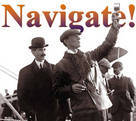
 Up
Up 
 The Secret
The Secret
of Flight
School Tour 
(You are here.)
Past Successes

 Down
Down




  Need
to Need
to
find your
bearings?
Try
these
navigation aids:
If this
is your first
visit, please stop by:
Something
to share?
Please:



|
|
Available in Française, Espańol, Portuguęs, Deutsch, Россию,
中文,
日本, and others.
 he story of the Wright brothers and the invention of the airplane are
woven deep into American history and culture, so deep that it
profoundly affects how we see ourselves. Their tale, in fact, may be
every bit as important as their accomplishments. There's no denying
that mechanical flight has changed the course of history. But their
story has changed the course of lives. he story of the Wright brothers and the invention of the airplane are
woven deep into American history and culture, so deep that it
profoundly affects how we see ourselves. Their tale, in fact, may be
every bit as important as their accomplishments. There's no denying
that mechanical flight has changed the course of history. But their
story has changed the course of lives.
The Wright tale
is as unforgettable as a nursery rhyme and as inspiring as a hymn.
Two bicycle mechanics from Dayton, Ohio, with no resources other
than their own pluck, out-invent the world's best scientific minds
and achieve the age-old dream of flight by virtue of their
imagination, determination, and courage. Once you know the basic
story, it becomes a metaphor in your own life, confirming the worth
of your dreams and the work you do to achieve them. For this reason
alone, it's a story worth telling our children again and again.
It is also a
wonderful vehicle for getting across a wide range of proficiency
requirements in science, technology, math, and social studies. And
it crosses many age levels from K through 12, but is especially
relevant and potent for 3rd through 8th
grades.
Bringing the Story to life
To tell a good
story, you need experience with your subject. So we conduct
expeditions in aviation archaeology, recreating the
invention of the airplane. We have built all the experimental
aircraft the Wright brothers designed between 1899 and 1905 in their
quest for a practical flying machine
-
their scientific kites, gliders, and powered Flyers. And we fly
them, traveling to the North Carolina Outerbanks near Kitty Hawk
where we can experience the winds and sands that were the Wright
brothers’ laboratory.
We have documented our adventures
in words, photographs, and video. These are woven into our school
presentation. To us, the Wright gliders and Flyers aren’t historical
artifacts, but actual flying machines. Your students watch as Major
Dawne Dunlop of the US Air Force loses control of the 1902 glider
and cartwheels across the sand. They see Lt. Cmdr. Klas Ohman of the
US Navy grimace as he struggles to keep the Wright glider in the
air. Second by second they follow Capt. Connie Tobias of United
Airways as she becomes the first woman to successfully pilot the
1903 Flyer. We don’t just tell the Wright story. We bring it to
life.Cool Stuff
Every teacher
knows you can get your point across better and easier with visual
aids. So we created a "portable museum" of the Wright brothers
especially for schools. It includes:
-
Wright
Bat — A toy helicopter the brothers built when they were
kids.
-
Wright
Bicycle — Will and Orv's introduction to control and
balance.
-
Control
Demonstrator - Showing how to control an aircraft in roll,
pitch, and yaw.
-
Inner
Tube Box Experiment — Reliving the discovery that inspired a
revolutionary new control system.
-
Not
Quite Wright Kite — So students can fly the Wrights’ first
controlled flying machine.
-
Wind
Tunnel and Balance — Allowing students to repeat the
Wright's lift experiments.
-
1903
Wright Flyer Flight Simulator — So students can relive the
adventure of the first controlled, powered flights.
Three of these
items – the inner tube box,
kite, and wind tunnel – are
things that your students can easily make from common, inexpensive
materials. The plans can be downloaded from our web site. Use these
to prepare for our visit or to reinforce the lessons after we leave.
AN historic aircraft
The
centerpiece of this museum is a full-size replica of the 1902
Wright Glider, the world’s first fully controllable aircraft,
the basis of the Wrights’ grandfather patent of the airplane, and
the granddaddy of everything that flies. It has an impressive
32-foot wing span when it’s assembled, but it breaks down so we can
fit it through an ordinary door. This lets us set up in a cafeteria,
gymnasium, large classroom, anywhere you have space for an airplane.
More important, this glider
was built and flown by kids. We worked with 8th-grade
students from Russia, Ohio to build this aircraft, then took them to
Kitty Hawk, North Carolina and taught these same 8th-graders to fly
it. It’s one thing to show kids an aircraft built by stuffy old
archaeologists, quite another to show them one that was built and
flown by their own peers. The message is loud and clear. The video
of young people flying a Wright glider of their own creation
inspires and empowers the young people who view it.
Interacting with the Wright brothers
Along with
this portable museum, we send one of our “curators” who has hands-on
experience with building and flying Wright aircraft and an in-depth
knowledge of the history and science involved. The curator spins a
spirited and humorous tale of two ordinary men –
Wilbur and Orville Wright –
who did something extraordinary by virtue of their imagination,
perseverance, and courage.
Our people
don’t just deliver a lecture, however. This is an interactive
presentation, requiring the attention of and input from your
students. They participate in demonstrations, perform experiments,
offer information, and draw conclusions. Some even get a little
“stick time” aboard the Wright glider! They repeat the same
intellectual journey that Wilbur and Orville navigated as together
our curator draws them along on the adventure that was the invention
of the airplane. At your request, we will also conduct hands-on
workshops, teaching your students to build a Not Quite Wright
Kite or use a wind tunnel.
Presentations and Workshops
We offer two
presentations, each lasting the length of a standard class period
(about 45 minutes), although either can be made longer or shorter to
suit you.
-
Three-Axis Control
— Our most popular program
traces the development of the airplane control system.
Three-axis control –
roll, pitch, and yaw –
was the secret of flight and the most important contribution the
Wrights made to aeronautics.
-
Kitty Hawk in a Box
— We show how the Wrights used
the results of their wind tunnel experiments to predict the
performance of their aircraft, showing students how a properly
planned a scientific investigation often includes coordinated
experiments in both the laboratory and the real world.
We also offer two hands-on workshops. These are longer than our
presentations, and require a morning or an afternoon (about 2-1/2
hours).
- Not Quite Wright Kite
— Students build a kite
with aerodynamic controls, while learning some simple aeronautic
engineering.
- Testing Wing Shapes
— Students learn how a
wing produces lift and drag, design their own wing shapes, and
test them in a wind tunnel. This is an especially good program
to show how mathematics relates to the real world. For older
students only (6th grade and above).
These presentations and
workshops are built around national academic standards for social
studies, science, technology, and math. We touch upon dozens of
benchmarks for each grade level between 3rd and 8th, explaining some
and reinforcing others. To see a list, download our file of
Scholastic Benchmarks.
Visiting Your School
To set up our exhibits and present them to your
students, we need an area of 1500 square feet or more. (The 1902
glider has a wingspan of 32 feet and is 17 feet from nose to tail.)
Because our displays are engineered to break down into small enough
pieces to get though an ordinary door, we can set up in an
auditorium, library, gymnasium, cafeteria, or large classroom.
Set-up takes about one and a half hours.
We can do up to five presentations a day in the
course of a normal school day, usually three in the morning and two
in the afternoon. Because these presentations are interactive, we
ask that you not schedule more than 200 students at a time. If you
would like us to do workshops, we can do up to two per day - one in
the morning and one in the afternoon, and we will work with a
maximum of 50 students. If we spend two days or more at your school,
we would be happy to make an evening presentation for parents or the
public at no cost to you.
If your school is further from Dayton, Ohio
than a day’s drive (400 miles), we require at least a two-day
engagement. Oftentimes, two or more schools in a region engage us
for a day each. On occasion, we have been engaged by an entire
school system in a region. If you would like to split the cost of a
visit with other schools, we are happy to oblige. However, we cannot
set up at more than one school in a day’s time.
Questions?
We suggest you download our
Secret of Flight packet
and list of Scholastic
Benchmarks for more detailed information on this program. If
you'd like to know what it costs. download the
School Tour Cost
Sheet. All three
are in PDF format so they can be easily printed and shared. If you
have further questions, please contact us. Here are a few of the
most frequently-asked questions:
Will you cover required academic
benchmarks for my area? Our programs are built around the
national standard benchmarks. Review the benchmark map in our
list and if you find something lacking, let us know the specific
benchmark or subject matter you want us to cover. As long as it
falls within the bounds of the history, science, technology, and
math related to the Wright brothers, we will work it in.
Is the program effective? All of
the schools we have visited think so, as do some very well-placed
folks in the State of Ohio legislature. Read the comments and
commendations on the page we have titled
Kind Words from Others.
Or review them in our Secret of Flight packet. Bear in
mind that these are only a tiny fraction of the praise we have
received.
Will you work with home-schooled
children? You betcha. Just bring together enough families to
cover our fees and find us a place to set up. We often make
presentations in hangars. (Where better?)
What does the program cost? That
will depend on the distance or your school from Dayton, Ohio, the
number of days we spend at your school, and the types of
presentations or workshops. There is an up-to-date fee schedule in
the School Tour
Cost Sheet or we can prepare an estimate
for you.
How de we schedule a visit? Just
contact us.
Send us an e-mail with a phone number and we'll have our people call
your people.
|
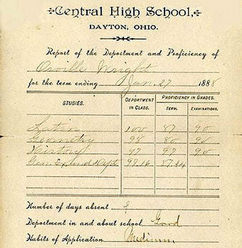
One of Orville's report cards – signed by his father, of course.
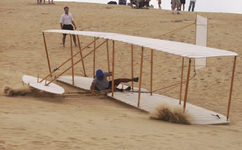
Capt. James Alexander, USAF, makes a hard landing in our 1902 Wright
Glider.
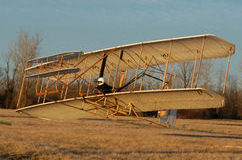
Capt. Connie Tobias makes a successful flight in the 1903 Wright
Flyer.
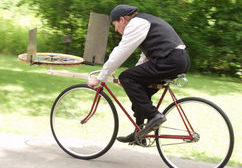
Repeating the Wright's "bicycle experiment" on a Wright bicycle
replica.
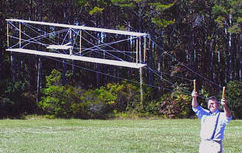
Flying the Wright kite.
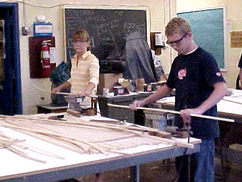
Students at Russia Local Schools in Russia, Ohio build ribs for a
1902 Wright glider replica.
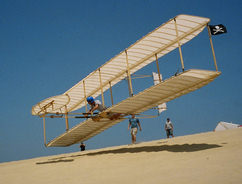
The Russia glider makes its first flight.
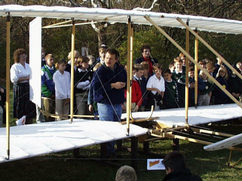
WBAC Director Nick Engler explains the 1902 glider to students.
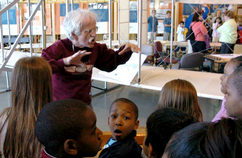
Dr. Les Garber, author of The
Wright Brothers and the Birth of Aviation, lets fly with some
amazing stuff.
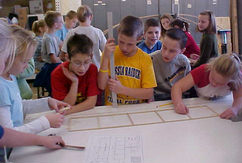
A team of young people builds a Not Quite Wright Kite.
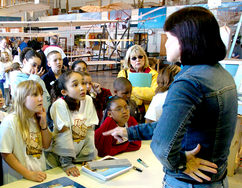
Capt. Connie Tobias relates her experiences flying the Wright Flyer.
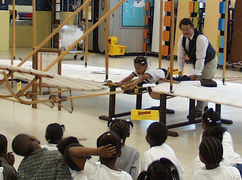
A young lady takes a turn in the cockpit of the 1902 glider.
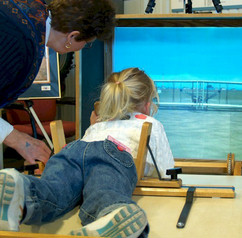
Another young lady takes a turn on our Wright Flyer simulator.
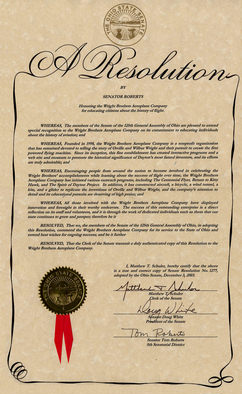
The State of Ohio has commended the Wright Brothers Aeroplane
Company for our innovative educational programs, as have many others
|

